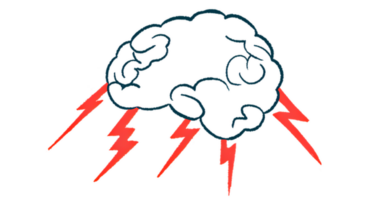An Open Letter to My Neurologist

To My Neurologist:
In an article published at KevinMD.com, authors of a study on the experience of Parkinson’s care partners suggest that asking a patient or care partner to write a letter — instead of relying solely on verbal conversation — illuminates new aspects of the physician-patient-family relationship. I believe this to be true.
In his book “The Wounded Storyteller,” sociology professor Arthur W. Frank identifies three basic narratives describing illness in writing: restitution, chaos, and quest. Restitution narratives anticipate getting well again and give prominence to the technology of cure. In chaos narratives, illness seems to stretch on forever, with no respite or redeeming insights.
Quest narratives are about finding that insight as illness is transformed into a means for the ill person to become someone new. They then use that experience to lessen the suffering of others.
I think of my writings, and this letter, as adhering to the definition of quest. My quest is to live better with Parkinson’s.
I have been using a new set of Parkinson’s self-management tools I call TBM, my acronym for threshold management, brain rewiring, and mindful movements. TBM is relearning how to think and act, and making those changes every waking moment. TBM requires shifting how I think about, and live with, Parkinson’s, and with shifting, new possibilities are discovered.
TBM offers me the possibility of slowing my disease progression. It offers the possibility of a better life for me and my partner. The old ways of viewing Parkinson’s just didn’t help me on my quest.
Daily TBM practice has helped to reduce the intensity and frequency of the worst of times with Parkinson’s — those ugly days. I’m not sure if the intensity of difficult symptoms has decreased, or if I’m managing them better. I’m not trying to paint too rosy a picture here. TBM is hard work. It’s not a cure, and it doesn’t address all aspects of Parkinson’s.
So, this is my year-end assessment:
Using TBM, pain has dropped to third concern on my list, after deep fatigue and what I term “flicker effect” symptoms. “Flickers” are symptoms that are not consistent, but occur more often.
Threshold crossing events (emotional lability) linked to ugly days have diminished, barring any unforeseen external events that pop up from time to time. But this is a “two steps forward, one step back” thing due to disease progression.
Aspiration is becoming more of a problem, and is now at the top of my relearning to-do list. TBM helps.
My motor aiming difficulty has increased. For example, when I move food on a spoon to my mouth, or reach for a cup to drink. (All my cups have tight lids to prevent spills.) Again, TBM helps.
There is no sensation of “thirst.” We’ve tried several accommodations, the most recent being a lanyard timer we can set to 20 minutes. It vibrates and reminds me to hydrate — when I remember to wear it.
I’ve noticed an increase in vertigo and dizziness. More stumbling and foot dragging, bumping into walls, or using walls as support. There is also an increase in akathisia. These issues are linked to the flicker effect, and TBM helps.
Mrs. Dr. C works hard to keep my schedule under control, limiting the amount of traveling in one day, the number of places to go and people to see. She tries to keep me in a manageable routine. Stress is a major factor in symptom management and how well I am doing on any given day.
I’m finding that I can do garden work 10 hours a week for no more than 90 minutes a day, when the weather allows. My exercise includes mindful movement focusing on core body strength.
I can’t do the type of physical activity I used to and had to relearn how to exercise, both mentally and physically. Prior to using the TBM techniques, I could only do 30 minutes of physical activity daily. I couldn’t even sit for a long car ride because of the crushing fatigue. TBM has helped, and Mrs. Dr. C appreciates the company. Even with these adjustments to my exercise regimen, I still need time in between exercise days to rest — lots of rest!
This letter is my way of sharing my Parkinson’s life with my doctor. You have always treated me with respect and compassion. For that, I am eternally grateful.
So, this is my quest: to discover as much possibility and hope as I can while living with Parkinson’s, and to share the possibilities with others.
Wishing you and yours, the readers of Parkinson’s News Today, and the folks at the site’s parent company, Bionews, a very happy holiday season. See you in 2022!
Dr. C
***
Note: Parkinson’s News Today is strictly a news and information website about the disease. It does not provide medical advice, diagnosis or treatment. This content is not intended to be a substitute for professional medical advice, diagnosis, or treatment. Always seek the advice of your physician or another qualified health provider with any questions you may have regarding a medical condition. Never disregard professional medical advice or delay in seeking it because of something you have read on this website. The opinions expressed in this column are not those of Parkinson’s News Today or its parent company, Bionews, and are intended to spark discussion about issues pertaining to Parkinson’s disease.








Pamela
Thanks for sharing and what a great idea. Your explanation of symptoms have also helped me describe the same ones I experience. And, Managing activity? My nemesis.
Ramakrishan
Hi, Ive sufferred from parkinsonian sypmtoms since 2006. I was on a wheel chair in 2014 to 2016. I then had bariatric surgery and started using mucuna pruriens extract. This had iraculous short term effect where i was able to walk and function normally for two hours, medicate for 15 min and bounce back for two hours. Would like to know how you rewired your brain regarding movements. I have known that such a thing is possible. But dont know where to start.
Judith. Griffin
Ramakrishan, Sounds great, I am glad you are doing well.. That Mucuna is unbeilable stuff. If you eat a heavy plant based diet and with it, and half a cup of some type of bean or legume daily, the phytochemicals in these foods---enhance the effectiveness of the Mucuna---with no major side effect for me in the last 18 month..... I introduced it very slowly and had crackers, ginger etc to combat possible nausea but. no issue there. I am rewiring or trying to rewire and everyday I do 5 minutes of nothing but concentrating on my breathing for starters.. Very difficult to do this at first but it gets easier. Good luck and Happy New Year! Judy
Gwendoline Jakins
I agree with Ramakrishan. I would love my husband to rewire his brain, but where does he start?
Gwendoline